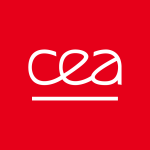Thesis
New concepts for cold neutron reflectors
Radiation-matter interactions
Materials and applications
The CEA and the CNRS have launched an initiative to design a new neutron source using low-energy proton accelerators, the ICONE project [1]. The goal is to build a facility that will provide an instrumental suite of about ten spectrometers available to the French and European scientific community. Neutron scattering experiments require thermal and cold neutrons. The design of the moderator is therefore a crucial component of the project to maximize the source’s performance.
One avenue for improving the moderator performances is to enhance the efficiency of the reflector, and more specifically, the cold neutron reflector. In this study, we propose to investigate the specific scattering properties of cold neutrons on nanostructured materials. Indeed, cold neutrons have long wavelengths (> 0.4 nm) and can therefore be coherently scattered by nanostructured materials. Scattering efficiency is not only amplified by coherent scattering effects, but it is potentially possible to direct this scattering if the reflecting material is anisotropic. This control over the scattering direction can further increase the moderator’s brightness.
The first part of the work will consist of identifying the most promising nanostructured materials and modeling their cold neutron reflectivity performance. In a second step, these materials will be shaped and their properties characterized using neutron scattering devices at neutron scattering facilities such as the ILL in Grenoble or the PSI in Switzerland.
One avenue for improving the moderator performances is to enhance the efficiency of the reflector, and more specifically, the cold neutron reflector. In this study, we propose to investigate the specific scattering properties of cold neutrons on nanostructured materials. Indeed, cold neutrons have long wavelengths (> 0.4 nm) and can therefore be coherently scattered by nanostructured materials. Scattering efficiency is not only amplified by coherent scattering effects, but it is potentially possible to direct this scattering if the reflecting material is anisotropic. This control over the scattering direction can further increase the moderator’s brightness.
The first part of the work will consist of identifying the most promising nanostructured materials and modeling their cold neutron reflectivity performance. In a second step, these materials will be shaped and their properties characterized using neutron scattering devices at neutron scattering facilities such as the ILL in Grenoble or the PSI in Switzerland.
SL-DRF-26-0372
Master 2 Interactions Rayonnement Matière ou Physique de la matière condensée
October 1 2025
Paris-Saclay
Ondes et Matière (EDOM)
Saclay
CEA
Direction de la Recherche Fondamentale
Institut rayonnement et matière de Saclay
Laboratoire Léon Brillouin
Groupe Infrastructure et développement

